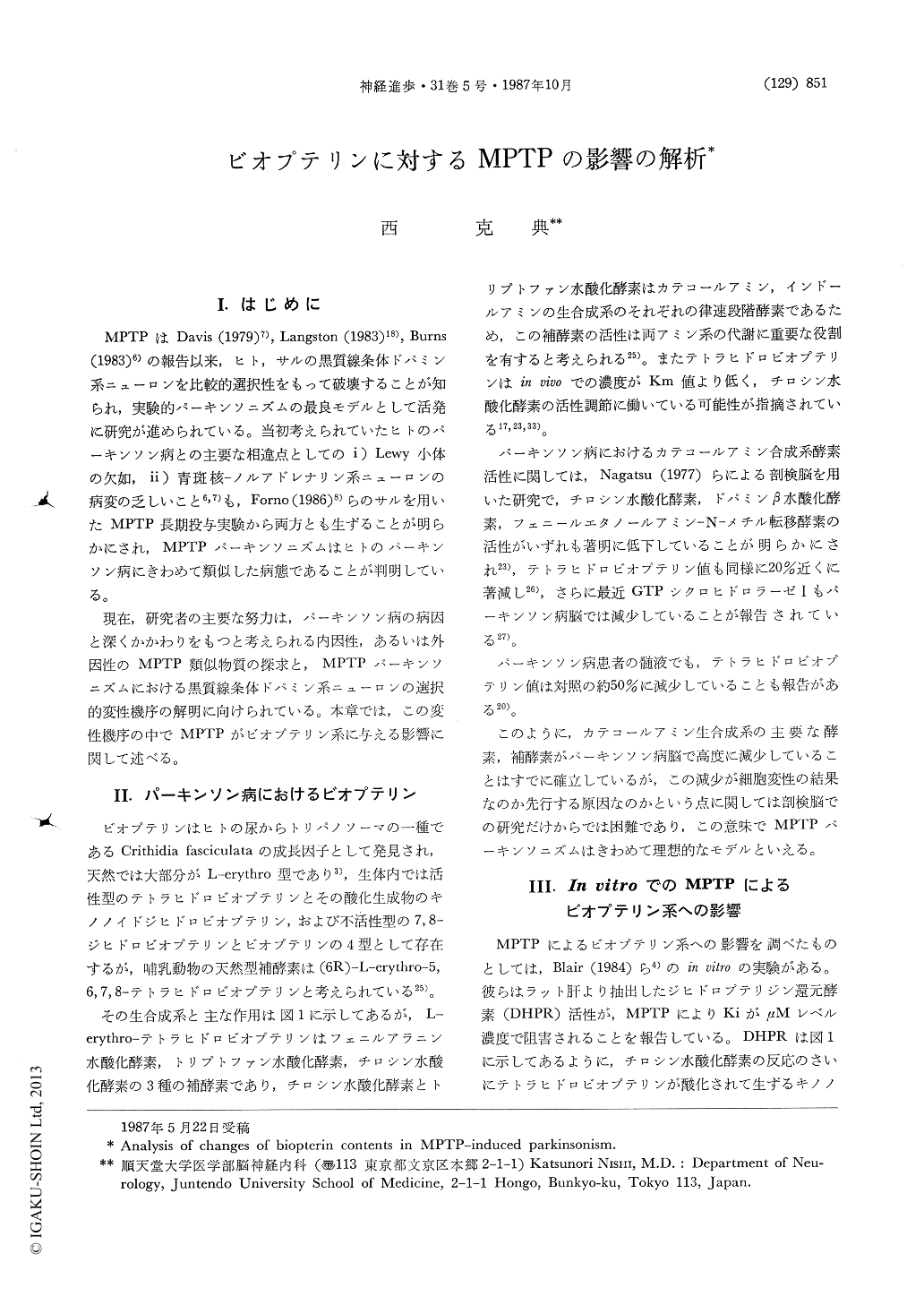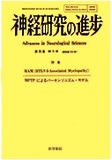Japanese
English
- 有料閲覧
- Abstract 文献概要
- 1ページ目 Look Inside
I.はじめに
MPTPはDavis(1979)7),Langston(1983)18),Burns(1983)6)の報告以来,ヒト,サルの黒質線条体ドパミン系ニューロンを比較的選択性をもって破壊することが知られ,実験的パーキンソニズムの最良モデルとして活発に研究が進められている。当初考えられていたヒトのパーキンソン病との主要な相違点としての i)Lewy小体の欠如,ii)青斑核—ノルアドレナリン系ニューロンの病変の乏しいこと6,7)も,Forno(1986)8)らのサルを用いたMPTP長期投与実験から両方とも生ずることが明らかにされ,MPTPパーキンソニズムはヒトのパーキンソン病にきわめて類似した病態であることが判明している。
現在,研究者の主要な努力は,パーキンソン病の病因と深くかかわりをもつと考えられる内因性,あるいは外因性のMPTP類似物質の探求と,MPTPパーキンソニズムにおける黒質線条体ドパミン系ニューロンの選択的変性機序の解明に向けられている。本章では,この変性機序の中でMPTPがビオプテリン系に与える影響に関して述べる。
MPTP, a nigrostriatal neurotoxin, is recently extensively studied as the best tool for experimental Parkinsonism model. However, the exact mechanism of its toxicity on dopaminergic neuron is still unclear.
In this report, studies of the effect of MPTP on tetrahydrobiopterin, a coenzyme of tyrosine hydroxylase, is reviewed. Some authors have demonstrated that MPTP or its derivatives inhibited dihydropteridine reductase (DHPR), an enzyme which regenerates tetrahydrobiopterin required for dopamine synthesis. Others also reported that the inhibition of tetrahydrobiopterin generating system by MPTP in slice experiments, but could not confirm inhibition of DHPR activity even in higher concentration of MPTP than previous reports.

Copyright © 1987, Igaku-Shoin Ltd. All rights reserved.


